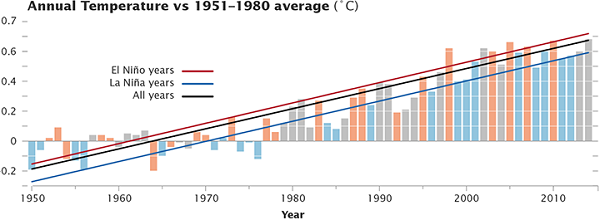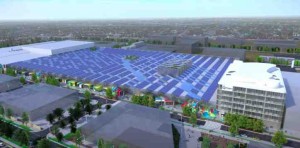1. Queensland’s minister for the reef
Premier Palaszczuk’s new ministry contained some surprises, including the appointment of Steven Miles as Minister for the Great Barrier Reef. His full handle is Minister for Environment and Heritage Protection, Minister for National Parks and the Great Barrier Reef.
According to the WWF, Minister Miles will be responsible for delivering ALP environmental commitments including: a ban on dumping dredge spoil in the Great Barrier Reef World Heritage Area; an 80 per cent reduction in pollution run-off into the Reef by 2025; and the reinstatement of key legal safeguards.
2. Japan now has more EV chargers than petrol stations
The number of EV charging points in Japan, including fast-chargers and those installed in homes, has reached 40,000, surpassing the nation’s 34,000 gas stations, a new report has found.
The surprising figures were reported last week by Japanese auto giant Nissan, whose fully electric car, the Leaf, has been one of the world’s big EV success stories, selling 160,000 cars globally since its 2011 launch date.
Mainly in Japan, the US and Europe.
It should be noted that some of the charging stations are in private homes. Also petrol stations have multiple pumps, not reflected in the figures.
Tesla has its own network of (solar powered) charging stations in the US – and has plans to build versions of this supercharge network in China, Europe and Australia.
In Australia, local fast-charge tech company, Tritium, installed its first public Veefil EV charger in Brisbane at a BMW dealership in Fortitude Valley – the first of a planned “electric super highway” of fast chargers along the east coast.
3. Temperature records vs trends
Gavin Schmidt, who has succeeded James Hansen as head of NASA GISS, has some Thoughts on 2014 and ongoing temperature trends. The shorter Schmidt is that while individual records grab the headlines, they don’t matter nearly as much as the underlying trend. This graph shows the overall trend in relation to El Niño and La Niña and years:

The blue bars represent La Niña years, the orange El Niño and the grey neutral years. 2014 is bang on trend, but only marginally higher than 2005 and 2010. Yet it is grey to their orange.
Schmidt doesn’t mention this, but while 2014 was neutral it did feature anomalous warming in the northern Pacific, rather than the eastern equatorial Pacific warming associated with El Niños. This warming is said to have some of the same climatic effects as El Niño. Perhaps we need a new category with a fancy name.
4. Climate sensitivity conundrums
The term is “equilibrium climate sensitivity” (ECS). It represents “the global surface temperature change anticipated as a result of doubling atmospheric carbon dioxide concentrations.” John Fasullo has done a post on the current challenges and constraints in relation to the concept. It’s technical and I find it a bit boring, but ECS is an absolutely central concept to climate change discourse.
The basic problem is that the IPCC broadened the uncertainty range at the lower end from 2-4.5°C in IPCC4 to 1.5-4.5°C in IPCC5. The likely midpoint is still 3°C.
Fasullo has a lot of complex argument about the constraints arising from observations and models. What I think it comes down to is this.
The cut-off date for published papers for IPCC5 was July 2012. Prior to that date there had been several papers suggesting uncertainty at the lower end. Now the literature has swung back the other way. There was also the ‘warming pause’, which for a while back there was deemed by some to be real.
Fasullo makes it clear that the calculations are based largely on short-term effects. In Climate clippings 125 I referred to a David Spratt article which refers to the work of Hansen, Tripati and others which put longer term ECS at 4.5°C or more. And part of the point of the Michael Mann article was that we are starting to get into the longer term feedback zone.
I think they should all go back and read Hansen et al Earth’s Energy Imbalance and Implications (2011, I think) pages 4-18. The table on p17 gives ECS at 8°C or more, depending on certain definitions and circumstances.
5. Origin Energy to build Australia’s biggest rooftop solar array
Origin Energy and Zen Energy Systems are to build a 3MW solar system on the rooftop of the old Mitsubishi factory in Tonsley, Adelaide, in what will be the largest rooftop solar array in the country.
The awarding of the contracts was announced by the South Australian government this week. The intention to build the array was first announced late last year.
Origin Energy will own the rooftop array and sell the output to the tenants of the Tonsley high tech centre…, under a power purchase agreement that it is looking at replicating elsewhere in the country.
Here’s an artist’s impression of the site:

6. Origin shifts retail focus to rooftop solar and battery storage
Origin Energy has provided further details of its impending major push into the domestic solar market, saying that it expects rooftop solar to grow five-fold over the next 15 years, and battery storage will also emerge.
The Tonsley centre initiative is one example of this company reorientation. Seems AGL is looking to follow suit.


It is good to see SA joining the ACT and using a contract based approach to utility scale renewables. Also good to see their 2025 target is 50%.
Using rooftops of existing buildings offers the potential of savings in support structures and electrical infrastructure.
It would be interesting to know what the contract price is.